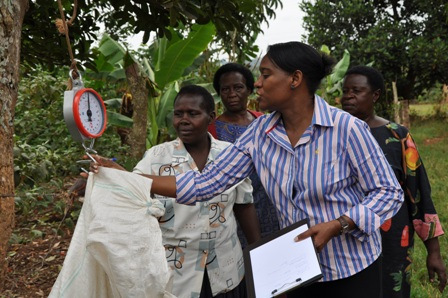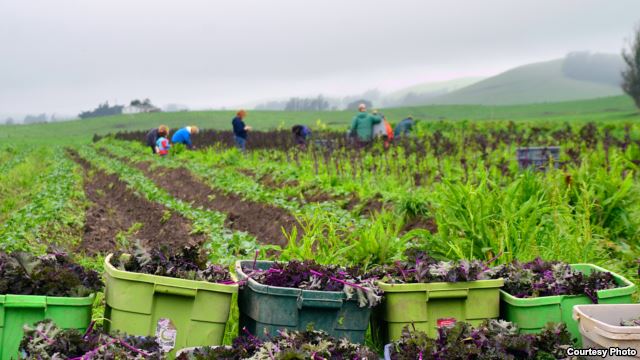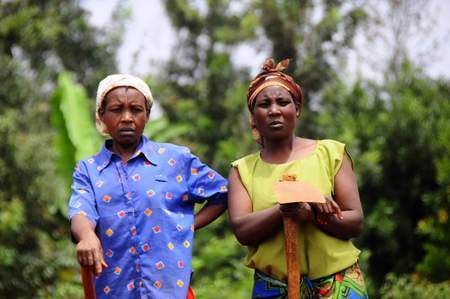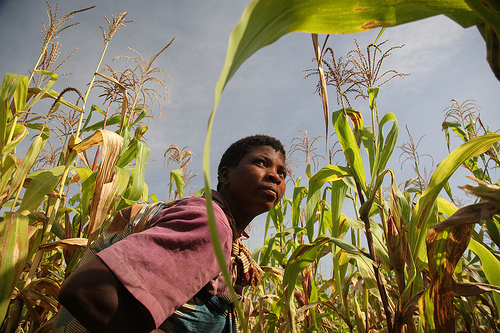Being a Young Professional in the Agricultural Water Management sector: challenges and opportunities for a food secure world
Call for contributions
Being a Young Professional in the Agricultural Water Management sector: challenges and opportunities for a food secure world
Call for contributions
 Want to grow watermelons? Just noticed that your chickens are dying off and you dont know what to do?
Want to grow watermelons? Just noticed that your chickens are dying off and you dont know what to do?
Join FarmingKenya, the leading farming-related Facebook group where tips and advice are freely shared among members. It is a site for production information seekers only sorry sales enthusiasts and advertisers, this page is not for you. The group has seen rapid growth: from a handful of members to well over 12,000 in less than two years, says Collins Areba, one of the two founders of the site.
 Last week, African leaders pledged to reprioritise agriculture in their national policies and increase state spending to end hunger across the continent by 2025.
Last week, African leaders pledged to reprioritise agriculture in their national policies and increase state spending to end hunger across the continent by 2025.
At the conclusion of a meeting at the African Union in Addis Ababa, ministers agreed to take a more holistic approach to tackling hunger. They committed to working with the private sector, farmers groups, civil society and academia to increase productivity, while also addressing the underlying causes of malnutrition.
In Mweiga, Nyeri County, Regina Muthoni, 21, runs Mwema Innovations, a fodder hydroponics farm. Here, she grows and trains farmers to plant barley grass in water without using soil. She sells barley seeds for Sh100 a kilo. A kilo of seeds produces 8-10 kilos of fodder. An area measuring 5-by-2.5 metres will grow fodder that can feed 37 pigs, 54 chicken and three dairy cows as a supplement to raise production, notes Regina, an alumnus of Othaya Girls.
He says 95 per cent of the members are aged 32 years and below. Most times, we host agriculture programmes in local radio stations. Nine out of 10 listeners who contact us are aged 25-30 years, he says. The ultimate goal, he notes, is to attract youths back to farms where they can earn decent incomes. The digital platform helps get the market and information from either the experts or those experienced in farming of certain crops or livestock, he says. Social media is where the youths are.
 Three women scientists, fellows of African Women in Agricultural Research and Development (AWARD), are among the 12 finalists in the Africa-wide Women in Science Competition, organized by the Forum for Agricultural Research in Africa (FARA). Winners will be announced during FARAs triennial Africa Agriculture Science Week in Accra, Ghana. The contest theme is Feeding 1 billion in Africa in a Changing World.
Three women scientists, fellows of African Women in Agricultural Research and Development (AWARD), are among the 12 finalists in the Africa-wide Women in Science Competition, organized by the Forum for Agricultural Research in Africa (FARA). Winners will be announced during FARAs triennial Africa Agriculture Science Week in Accra, Ghana. The contest theme is Feeding 1 billion in Africa in a Changing World.
AWARD Fellow Dr. Florence Lubwama Kiyimba, a Program Leader and Head of the Agricultural Engineering and Appropriate Technology Centre at the National Agricultural Research Organization (NARO), presented her PhD thesis Labour-Saving Tools for Women: The Forage Chopper for Smallholder Dairy Farmers in Uganda for the competition.
 Smallholders need to work the logic of markets. For that they need skills and they do not come spontaneously. To make farming a business, farmers need specific services to help them in doing so: business services. And these services need to cater to a wide range of types of farmers.
Smallholders need to work the logic of markets. For that they need skills and they do not come spontaneously. To make farming a business, farmers need specific services to help them in doing so: business services. And these services need to cater to a wide range of types of farmers.
The same holds true for other value chain actors such as local traders, warehouse managers, input suppliers and local processors: they also need business services to be able to cope with the dynamic environment they find themselves in.
 One third of all food fails to make it from farm to table, according to the United Nations. But one farm in California has turned to social media to try to reduce wasted produce.
One third of all food fails to make it from farm to table, according to the United Nations. But one farm in California has turned to social media to try to reduce wasted produce.
Bloomfield Farms general manager Nick Papadopoulos grew increasingly frustrated as he watched his employees repeatedly return from a weekends worth of farmers markets with unsold, top quality produce that would spoil before the next market day.
Workers would leave the extra produce in a barn where Papadopoulos would find boxes of leafy greens, herbs and carrots piled onto wooden pallets.
So he came up with a plan to offer the food at a deep discount and he spread the word by updating the farms Facebook status on Sunday nights. The deals were open to anyone on the social media site. One week, the vegetables were snapped up by a group of homeowners in a neighboring community. Another week, a group of friends went in on it.
 Women, and notably rural women, have a central role to play in agriculture, rural development and food security. This is a key fact agriculture innovation systems (AIS) should take into account.
Women, and notably rural women, have a central role to play in agriculture, rural development and food security. This is a key fact agriculture innovation systems (AIS) should take into account.
In spite of all traditional considerations and discrimination against, women feel progressively involved in key development areas such as food security and poverty alleviation, but this is not always without challenges.
 Over 70% of people in sub-Saharan Africa depend on agriculture for their livelihoods. In sub-Saharan Africa, over 60% of employed women work in the agricultural sector and a significant number of them are smallholder farmers. Thus, it may be rightly said that African women are the backbone of the continents agriculture and nutrition.
Over 70% of people in sub-Saharan Africa depend on agriculture for their livelihoods. In sub-Saharan Africa, over 60% of employed women work in the agricultural sector and a significant number of them are smallholder farmers. Thus, it may be rightly said that African women are the backbone of the continents agriculture and nutrition.
However, despite the pivotal role that women play in Africas agriculture sector, two recent flagship reports by the Food and Agriculture Organization and the World Bank show that a gender gap exists in agriculture, with rural women farmers facing a number of constraints not experienced by their male counterparts.
第 65 页 共 110 页